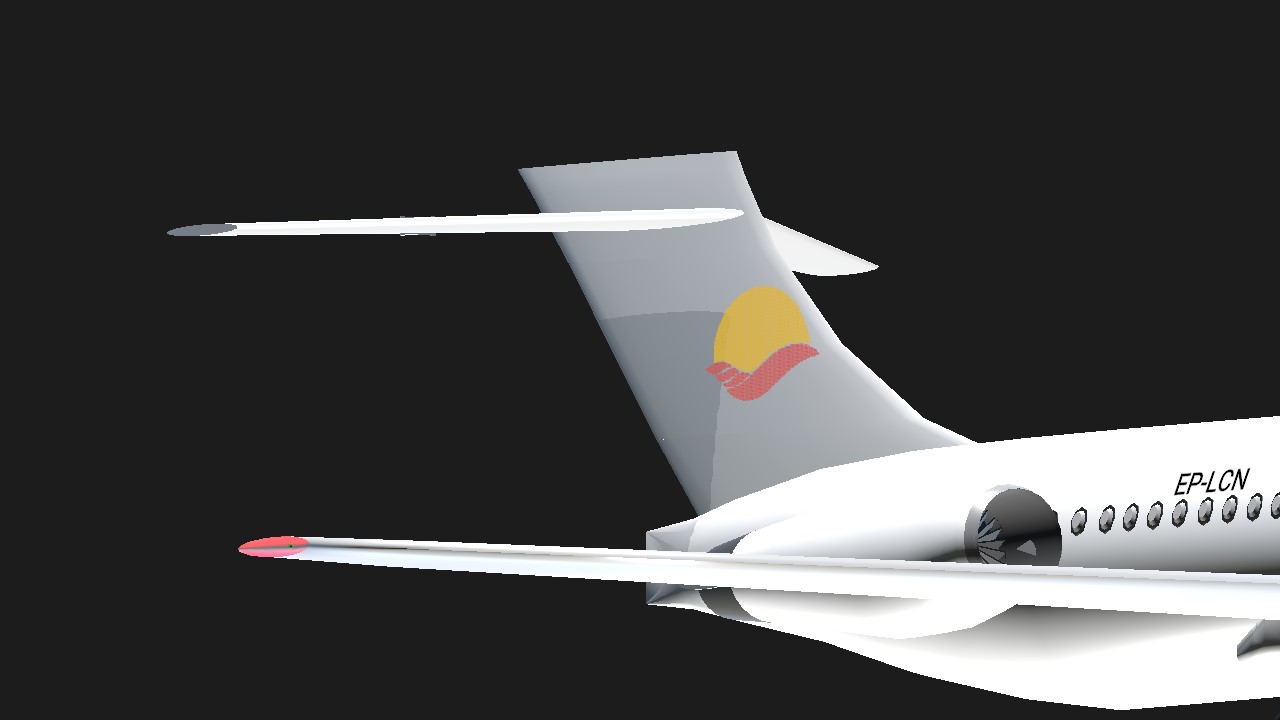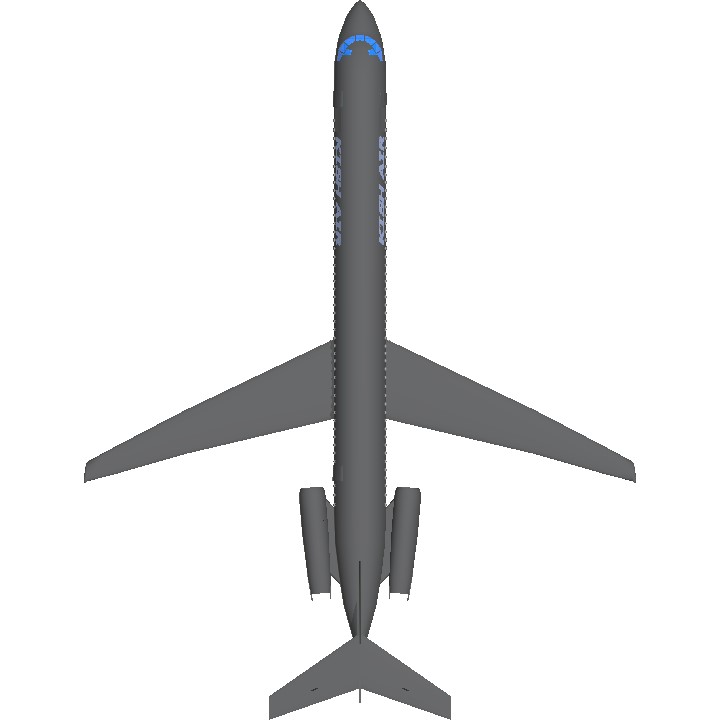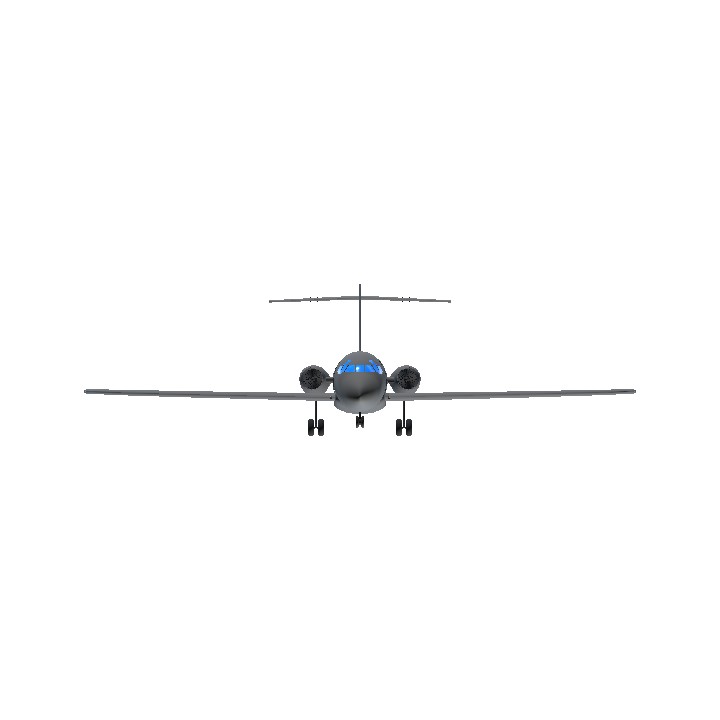It's slightly different from the teasers. Major difference being the fuselage is longer.
About:
The McDonnell Douglas MD-80 is a series of single-aisle airliners developed by McDonnell Douglas from the DC-9. Stretched, heavier, and with higher bypass Pratt & Whitney JT8D-200 engines, the DC-9 Series 80 was launched in October 1977. It made its first flight on October 18, 1979 and was certified on August 25, 1980. It was delivered to launch customer Swissair on September 13, 1980, which introduced it into commercial service on October 10, 1980.
Keeping the five-abreast coach seating, longer variants are stretched by 14 ft (4.3 m) from the DC-9-50 and have a 28% larger wing. The larger variants (MD-81/82/83/88) are 148 ft (45.1 m) long to seat 155 passengers in coach and, with varying weights, can cover up to 2,550 nmi (4,720 km). The later MD-88 has a modern cockpit with EFIS displays. The MD-87 is 17 ft (5.3 m) shorter for 130 passengers in economy and has a range up to 2,900 nmi (5,400 km).
It competed with the Boeing 737 Classic and the Airbus A320. Introduced in 1995, the MD-90 is a further stretch powered by IAE V2500 high-bypass turbofans, while the shorter MD-95, the later Boeing 717, was powered by Rolls-Royce BR715 engines. MD-80 production ended in 1999 after 1,191 were built.
Announced on April 16, 1979, the MD-82 (DC-9-82) was a new MD-80 variant with similar dimensions to those of the MD-81 but equipped with more powerful engines. The MD-82 was intended for operation from 'hot and high' airports but also offered greater payload/range when in use at 'standard' airfields.[36] American Airlines was the world's largest operator of the MD-82, with at one point over 300 MD-82s in the fleet.
Originally certified with 20,000 lbf (89 kN) thrust JT8D-217s, a -217A-powered MD-82 was certified in mid-1982 and became available that year. The new version featured a higher MTOW (149,500 lb (67,800 kg)), while the JT8D-217As had a guaranteed take-off thrust at temperatures up to 29 °C (84 °F) or 5,000 ft (1,500 m) altitude. The JT8D-217C engines were also offered on the MD-82, giving improved Thrust specific fuel consumption (TSFC). Several operators took delivery of the -219-powered MD-82s, while Balair ordered its MD-82s powered by the lower-thrust -209 engine.[6][page needed][33]
The MD-82 features an increased standard MTOW initially to 147,000 lb (66,700 kg), and this was later increased to 149,500 lb (67,800 kg). Standard fuel capacity is the same as that of the MD-81, 5,840 US gal (22,100 L), and typical range with 155 passengers is 2,050 nmi (3,800 km). Wikipedia
Controls
AG1-Landing Lights
AG3+Brakes-Reverse Thrusters
AG4-Nav Lights
AG-7: Interior light
VTOL down - Flaps
Trim - Trim
Yaw - Nose gear steering
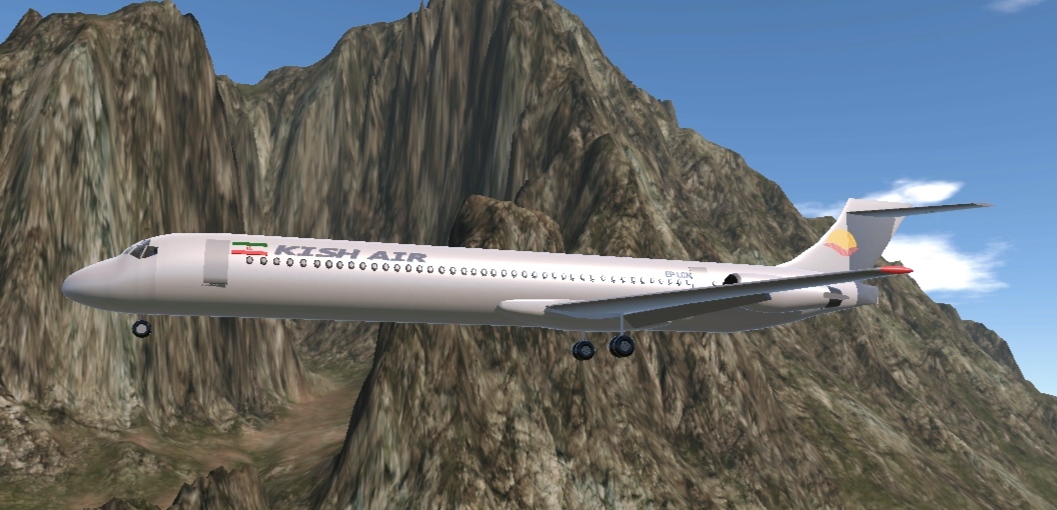
Real Photo:
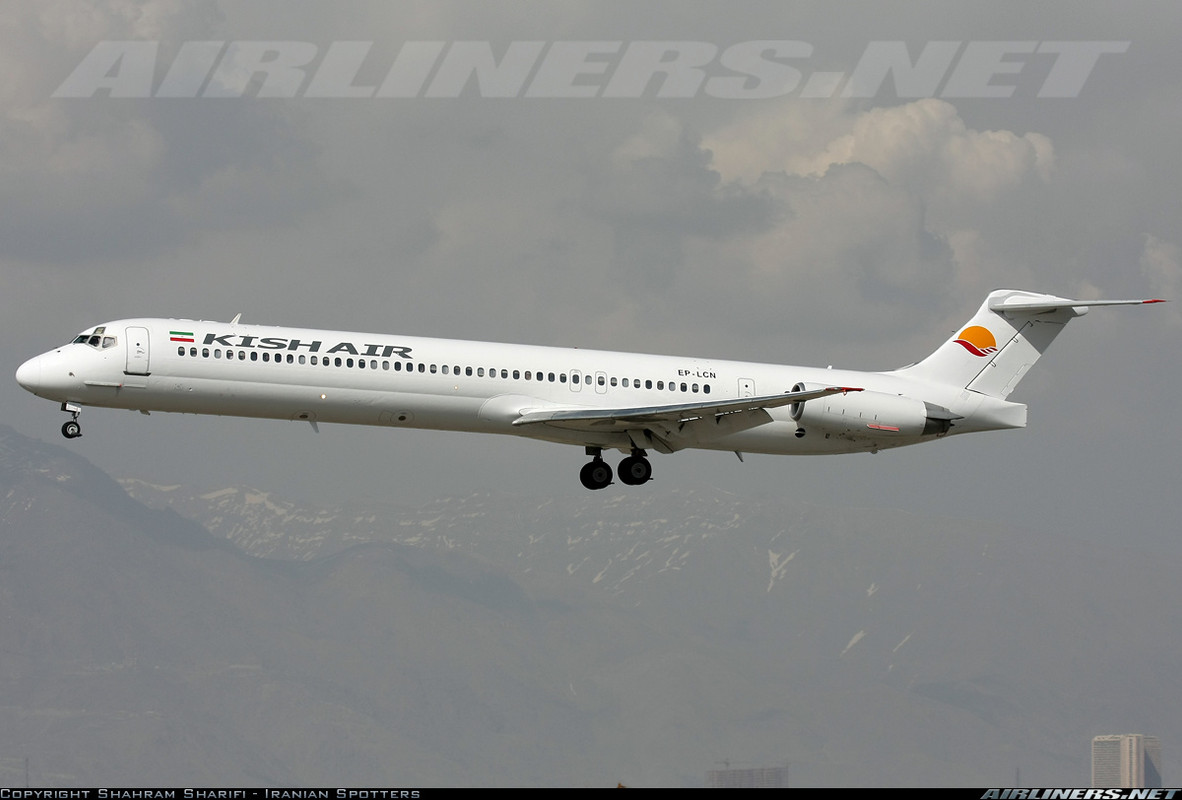
Credit to @waffles101's for his original McDonnell Douglas MD-82
The logo and the English text of the plane are made by @FoxtrotCharlieCharlieX.
Specifications
General Characteristics
- Predecessor McDonnell Douglas MD-82
- Successors 1 airplane(s) +28 bonus
- Created On Android
- Wingspan 115.5ft (35.2m)
- Length 150.6ft (45.9m)
- Height 31.8ft (9.7m)
- Empty Weight N/A
- Loaded Weight 48,325lbs (21,919kg)
Performance
- Power/Weight Ratio 1.388
- Wing Loading 32.8lbs/ft2 (160.1kg/m2)
- Wing Area 1,474.0ft2 (136.9m2)
- Drag Points 12504
Parts
- Number of Parts 460
- Control Surfaces 5
- Performance Cost 2,038


